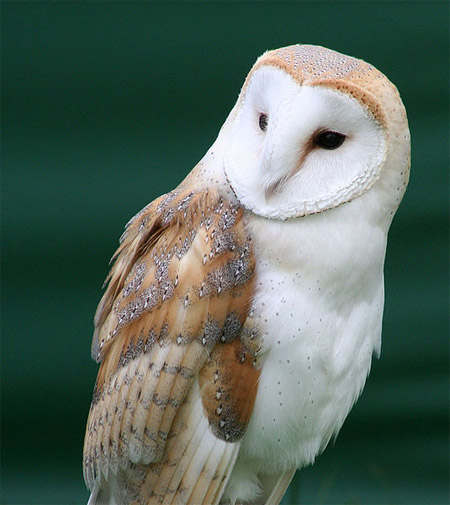Royal Ontario Museum Blog
Monthly Archive: December
Meteorite of the month: Springwater pallasite
The world's largest specimen of the Springwater pallasite meteorite.
This is the first blog in a new series, Meteorite of the Month, that will feature meteorite specimens from the museums outstanding collection. We will also be putting up a Mineral and a Gem each month so there’s something for everybody.
Mineral of the month: serandite
World's largest twinned serandite crystal.
This is the first entry in a new series the Earth Sciences section will be running, Mineral of the Month. These blogs will feature remarkable (and perhaps some not quite so remarkable but interesting none the less) specimens from the museum’s world class mineral collection. We will also be featuring monthly meteorites and gems so there will be something for everyone to enjoy.
A Rare and Beautiful Bird

Their distinctive heart-shaped face actually helps improve their hearing. With lop-sided ears, they can easily pinpoint prey with sound alone. Photo by Steve Brace
Meteorite or “Meteor-wrong”?
ROM Earth Scientists receive dozens of requests each year to identify possible meteorites. This is especially the case when there is a spectacular fireball similar to the one which recently streaked across southern Ontario on December 12 of this year (the video was captured by astronomers at the University of Western Ontario). Do you think you have found a space rock?
Yellowjackets (a.k.a. Late Summer Picnic Pests)
We love picnicking outside in the summer but in August and September our meals are inevitably cut short because of wasps. What are they and what can we do about them?
Summerasuarus: Dino Storage
Recently, we visited at the Vertebrate Palaeontology Lab to see how dinosaur bones are extracted from their plaster field jackets after they are hauled back from the field by palaeontologists like Dr. David Evans.
But where does the ROM store these fossils once they are free from their rock matrix? Welcome to Vertebrate Palaeontology Collections room, housing more than 75,000 fossilized bone specimens ranging in size from small toes to an entire row of Hadrosaur skulls!
Summerasaurus Part V: The Badlands
Walking through the badlands is like walking through a western novel: canyons cut through the prairie, exposing layers of brown, gold, black and white sediment. Clichés keep popping up: tumbleweeds roll by, cactus pop out from unexpected places, and cattle skulls bleach in the sun. Scorpions hide in coal seams, soaking up the sun’s heat from the black rock that camouflages them. It’s a bit overwhelming at first, but once you accept the fact that you’re in a place unlike anywhere else in Canada, it all becomes simple and beautiful.
Summerasaurus Part IV: How to Find Dinosaurs
Mark Farmer recently returned from an expedition to the badlands of southern Alberta with Dr. David Evans, Associate Curator of Vertebrate Paleontology at the ROM, in search of dinosaurs. Join us as Mark and Dr. Evans put up their notes from the field, detailing discoveries, how dinosaurs are found and excavated, life in the field and more.
Summerasaurus Part III: The Jacketing Process
Mark Farmer recently returned from an expedition to the badlands of southern Alberta with Dr. David Evans, Associate Curator of Vertebrate Paleontology at the ROM, in search of dinosaurs. Join us over the course of the next month as Mark and Dr. Evans put up their notes from the field, detailing discoveries, how dinosaurs are found and excavated, life in the field and more.
I found what looks like a tiny “caterpillar” in my home. What is it?
Let’s take a look at a common critter that share our space. Amazingly, over 500 species of arthropods have been recorded in houses! One of our most common household guests is the carpet beetle. The larvae look like tiny, furry, ‘caterpillars’.

Larva of a carpet beetle, family Dermestidae, also known as skin or hide beetles. Drawing: copyright ROM.
